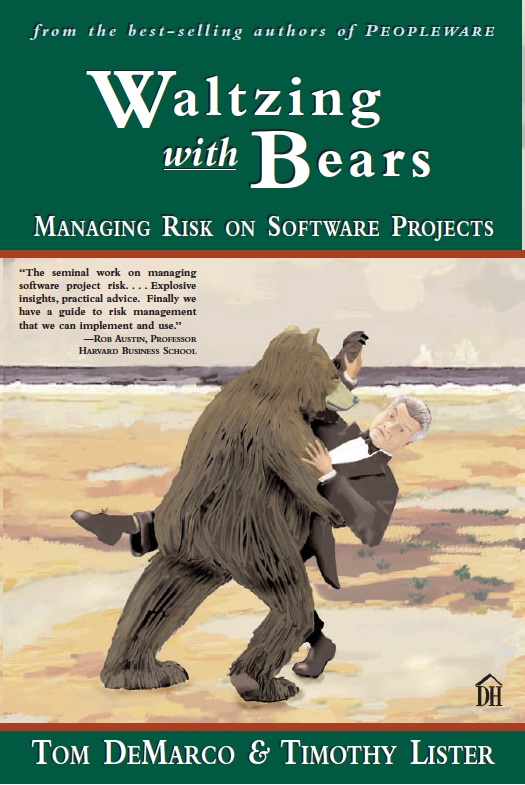 I started a new book recently called Protecting the Gift: Keeping Children and Teenagers Safe (and Parents Sane) by Gavin de Becker. It’s not exactly light summer reading, but I highly recommend it to anyone wants to learn how to make their kids alert, aware and safe – without sending them to therapy with a case of anxiety. As I’ve been reading, I’ve noticed that there are some very strong parallels between managing kids’ safety risks and managing risks in projects.
I started a new book recently called Protecting the Gift: Keeping Children and Teenagers Safe (and Parents Sane) by Gavin de Becker. It’s not exactly light summer reading, but I highly recommend it to anyone wants to learn how to make their kids alert, aware and safe – without sending them to therapy with a case of anxiety. As I’ve been reading, I’ve noticed that there are some very strong parallels between managing kids’ safety risks and managing risks in projects.
Rationalizing Risks
The author discusses how easy it is for parents to “reason away” potential threats. For example: “That man who was staring at us probably has some social challenges and doesn’t know any better. I’m sure he’s harmless.” He might very well be harmless, but if you’re getting a bad vibe from someone, don’t immediately discount it. Be on guard and avoid putting yourself (and your kids) in vulnerable situations.
Similarly, in managing projects, you might find yourself saying, “We still need to define that feature, but it probably won’t be too much work.” It’s often those nagging “undefined” aspects of your projects that become the big complicated messes and slow your progress to a crawl. Trust your 6th sense when it comes to hidden risks. If someone is dragging their feet on getting back to you with information, is it because they don’t want to deliver bad news? It’s in those cases that you need to read between the lines and look for leading indicators of problems.
Facing Risks Head On
Another great book is, Waltzing with Bears: Managing Risk on Software Projects by Tom DeMarco & Tim Lister. The authors state that risk management is “project management for adults.” They write, “An almost-defining characteristic of adulthood is a willingness to confront the unpleasantness of life, from the niggling to the cataclysmic.” In the same way we should not rationalize or dismiss potential threats to our children, we should not dismiss potential risks to our projects. Instead, focus on indentifying the risk, determining the probability of it actually happening, and assessing the impact if it does happen.
Once the risk is out in the open and logged in a status report or discussed in a team meeting, it should be monitored regularly throughout the project life span. You’ll get more credit and respect for identifying, communicating, and dealing with the risks in an upfront way than ignoring them or brushing them under the rug.
Does Gender Play a Role?
Protecting the Gift also discusses the theory that women are naturally inclined to think about risk more than men. Throughout human history, women have served as protectors of the children. They have become experts at finding potential hazards, even those that are cleverly disguised. They think of all the possible things that could go wrong and come up with strategies to avoid them.
Project managers should consider taking the “motherly” approach when it comes to risk. Always be aware of potential risks and be ready to figure out how to avoid or deal with them. Of course, taking on some amount of risk is inevitable (and even a good thing) if you want to keep your product ahead of the curve and push the boundaries of innovation. But the risk should be calculated and the stakeholders of the project should be aware of the tradeoffs.
Here’s an example of how this can play out on the job. A few years ago, my project team was tasked with building a mobile site that interacted with the client’s (as yet unbuilt) API. The project was sold with a three week timeline, starting immediately. Once I lifted my jaw off the floor, I decided to hold a risk identification meeting with the programmers, to come up with all of the possible things that could challenge us and how we might deal with them. After this meeting, I was told by my boss to not hold any more meetings of this kind so that the programmers would “not have to worry” about these things. I strongly disagreed — we’d surely be losing more sleep if we didn’t spend the time trying to think about what could happen.
My boss’s stance was similar to parents who, when asked to list the most serious risks their children face, said “I don’t want to think about such things”, or “I can’t imagine.” As Gavin de Becker explains, the problem is “if you cannot imagine something, you also cannot predict it, nor protect against it.”
Dealing with risks – as project managers and as parents – isn’t always pleasant business. But if we can face those risks early and manage them rationally, we’ll end up with better results in the end.







